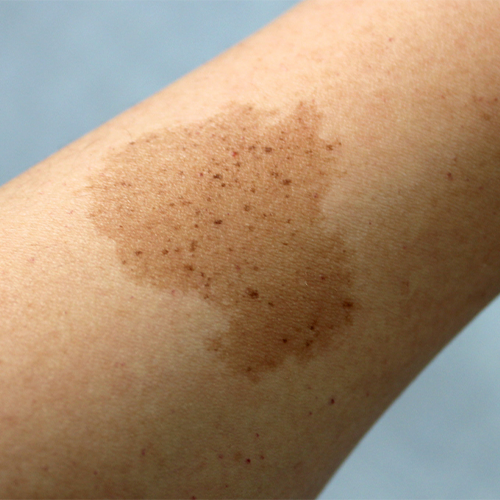The removal of birthmarks and sunspots by laser is a common dermatological procedure. Laser treatment can be effective in targeting pigmented lesions and promoting skin rejuvenation.
Here are some key points regarding the removal of birthmarks and sunspots using lasers:
Birthmarks (Nevi):
Birthmarks can come in various forms, including pigmented nevi (moles) and vascular nevi (such as port-wine stains).
For pigmented birthmarks, lasers that target melanin (the pigment responsible for colour in the skin) are commonly used. Q-switched lasers, for example, may be employed to break down the pigment in the birthmark gradually.
It’s essential to note that not all birthmarks are suitable for laser treatment, and the approach depends on the specific type and characteristics of the birthmark. Consultation with a dermatologist is crucial to determine the most appropriate course of action.

Sunspots (Solar Lentigines or Age Spots):
Sunspots, also known as age spots or liver spots, are areas of increased pigmentation on the skin caused by prolonged sun exposure.
Lasers, such as fractional lasers or intense pulsed light (IPL) devices, may be used to target the pigment in sunspots. These lasers work by breaking down melanin, leading to the gradual fading of the spots.
Sunspot removal may require multiple sessions for optimal results, and it’s important to use sun protection to prevent the recurrence of new spots.
Side Effects:
Laser treatments may cause temporary redness, swelling, or darkening of the treated area. These effects are usually transient and resolve over time.
It’s crucial to follow post-treatment care instructions provided by the dermatologist in manchester to minimize the risk of complications.
Consultation with a Dermatologist:
Before undergoing laser treatment for birthmarks or sunspots, it’s recommended to consult with a dermatologist. They will assess the specific characteristics of the skin lesions, discuss the potential benefits and risks, and determine the most appropriate laser type and settings for your individual case.
Sun Protection:
Regardless of the treatment method, sun protection is crucial to prevent the formation of new sunspots and protect the skin from further damage.
Always consult with a qualified dermatologist or healthcare professional to determine the most suitable approach for your unique skin concerns. They can provide personalized advice based on a thorough examination of your skin.

ABOUT
Dr.Aiza
Dr Aiza Jamil is a one of the leading UK trained Consultant Dermatologist, laser and aesthetics. Dr Aiza Jamil did her dermatology training in Sheffield and works as Consultant Dermatologist in Manchester University Hospitals providing services to UK’s largest hospital, Manchester Royal Infirmary. She has also completed American Board Diplomate Certification in medical and cosmetic lasers from American Board of Laser Surgery making her unique in having both UK and USA qualifications.
Frequently Asked Question
Do Birthmarks Appear As You Get Older?
Some birthmarks can become more noticeable or change in appearance over time due to sun exposure, hormonal changes, or ageing.
When Should You Worry About A Birthmark?
You should consult a dermatologist if a birthmark shows signs of change in size, shape, colour, or texture or if it starts to bleed, itch, or become painful.
Can A Birthmark Turn Cancerous?
While most birthmarks are harmless, certain types, such as congenital melanocytic nevi, have a small risk of developing melanoma, a form of skin cancer. Regular skin checks with a dermatologist are recommended.
Can A Birthmark Appear Later In Life?
Yes, new birthmarks can develop at any age, although this is less common than birthmarks from birth or childhood. Any new or changing skin lesions should be evaluated by a dermatologist to rule out any concerns.
How Do You Tell The Difference Between Age Spots And Melanoma?
To distinguish between age spots and melanoma, consider the following:
Age spots:
- Typically small, flat, and tan or brown.
- Develop as a result of sun exposure and ageing.
- Generally uniform in color and shape.
- Rarely change in size or shape over time.
Melanoma:
- Usually larger, irregularly shaped, and may have uneven borders.
- It can appear dark brown or black but may also be multicolored.
- It may change in size, shape, or color over time.
- It may have other symptoms like itching, bleeding, or crusting.
If you notice any suspicious changes in your skin, such as new or changing moles, it’s essential to consult a dermatologist for evaluation and possible biopsy. Early detection is critical to effectively treating melanoma.


